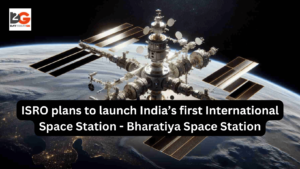‘Bharatiya Space Station’ is the name of India’s planned permanent space station, which the country hopes to launch within the next quarter of a century. By 2028, the Indian Space Research Organization (ISRO) hopes to have launched the station’s first module.
Included in India’s lofty goals for the future of space travel are crewed flights, increased space exploration, and improved launch capabilities.

ISRO
Beginning of Module Launch in 2028
Launch of the Bharatiya Space Station’s first module is targeted for 2028, according to remarks made by ISRO Chairman Dr. S. Somanath. Launched atop India’s LVM3 rocket, this module is expected to weigh 8 tons. After this, more modules will be released over the following seven years.
A fully functional space station with increased launch capability, docking infrastructure for personnel and cargo transports, zero gravity research laboratories, and other features is ISRO’s goal by 2035.
Working on Heavy Lift Launchers
More stronger rockets, designed to deliver 20-25-ton payloads to Low Earth orbit, are being developed by ISRO to assist the space station.
With the help of these heavy lift vehicles, a modular station can be assembled in space by launching individual portions and then combining them. In the future, they may even be able to lend a hand with interplanetary expeditions.
Missions with Crews to Come
Although the initial module will be operated by robots, Dr. Somanath has hinted at the possibility of crewed missions in the years after 2035, when the Bharatiya station will be fully operational.
At the end of this three-pronged plan, which began with robotic spacecraft and continues with human spaceflight projects and a permanent national space station, India will have achieved its goal.
International Space Station Scenery
With the possibility of the International Space Station (ISS) ending operations by 2030, opening the door to new national or regional stations, India is feeling ambitious.
Russia is planning to build its own ROS station to replace lost access to the ISS, while China already has a permanent station called Tiangong. In this context, Bharatiya station solidifies India’s position as a leading spacefaring nation.
Expanded Floor Designs
Besides the space station, other programs like as the Gaganyaan crewed spacecraft, the Aditya solar observatory, alien rovers, and nuclear propulsion exploration are being accelerated by ISRO.
As part of its efforts to encourage innovation and research, ISRO has allowed private companies access to the space sector. Launch services, satellite manufacturing, and public-benefitting applications can all benefit from their involvement.
What the Bharatiya Space Station Means for India
When completed, India’s space station would represent a watershed moment in technological history, opening up new frontiers for exploration and solidifying the country’s position in the global arena.
If all goes according to plan, it will be an example of a national priority–driven, self-sufficient space industry. Without a question, India will go down in space development history as the nation that built the Bharatiya Space Station.










